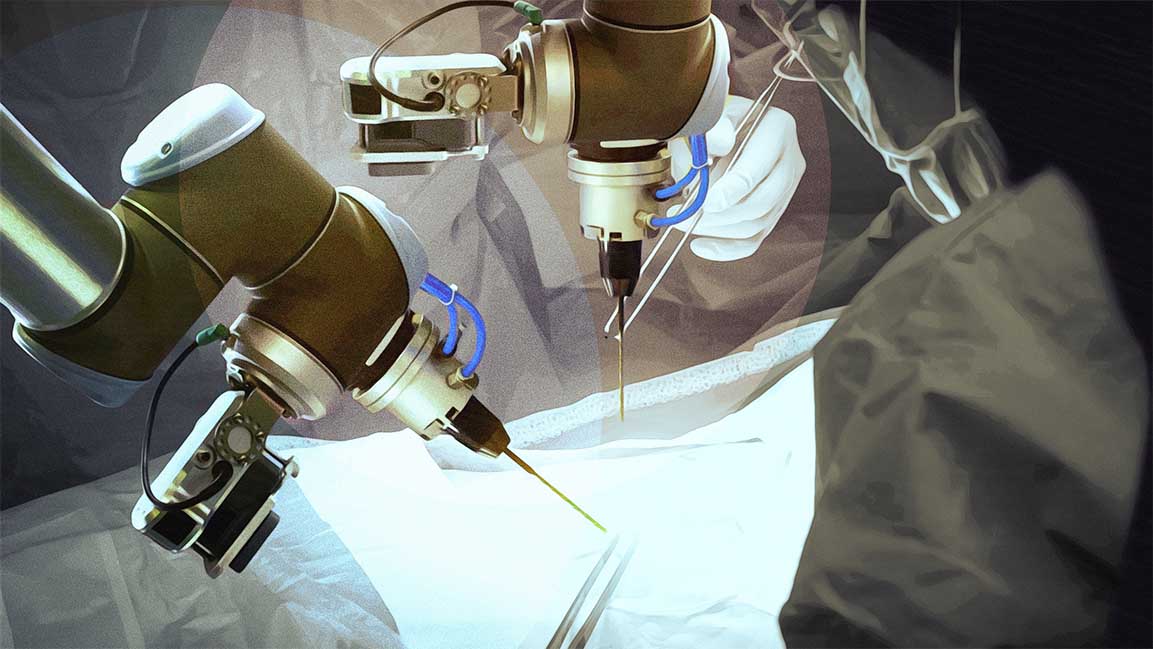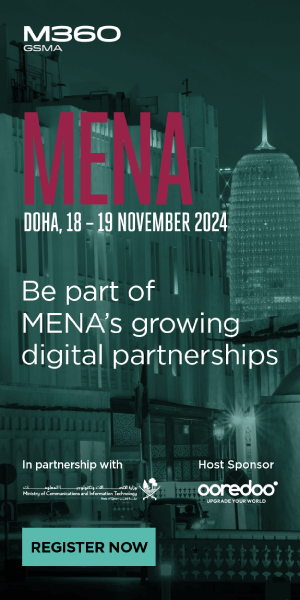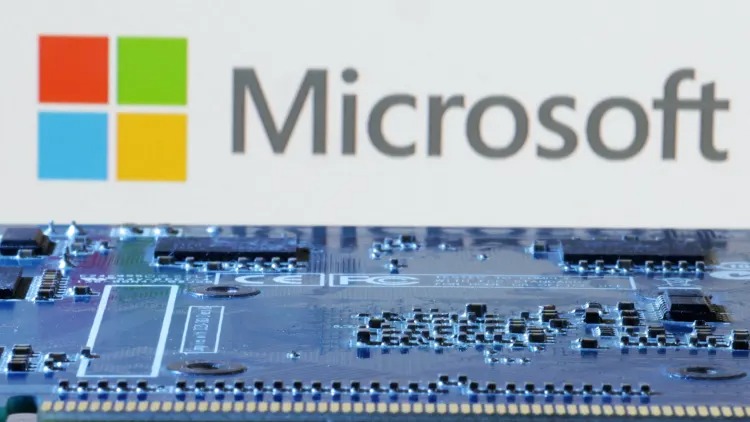- | 9:00 am
The UAE is increasing the use of robotics in healthcare. Is that good?
Major economic projections, new policies, and regular innovations have all contributed to robotics emerging as a powerful tool in healthcare practices in the country.

A robot welcoming you into the mall or delivering ice cream aren’t uncommon sights in the UAE. But what if the robot was performing critical surgery on you?
Contrary to popular belief, the emergence of the UAE as a frontrunner in adopting cutting-edge technologies across various industries isn’t a recent phenomenon.
The healthcare sector is no exception to this, with the incorporation of robotics, AI, and VR going back to assisted surgery in 2014 at Al Qasimi Hospital. In 2018, the hospital was equipped with a new robotic device for complicated catheterization and cardiac surgeries.
Several hospitals use robots for largely non-invasive procedures, including Rashid Hospital Dubai, Cleveland Clinic Abu Dhabi, and more.
The Ministry of Health and Prevention has done much to encourage and enable the movement, including but not limited to launching the Robotic Surgeries Program in Gynaecology and Obstetrics (April 2019), a robotic pharmacy in the external clinics of Al Fujairah Hospital (April 2017), the Medopad app to track daily patient activities, etc.
Suffice it to say there has been consistent monitoring and work towards growing and strengthening the use of robotics in healthcare nationwide.
KEY INCENTIVES FOR DEVELOPMENT
Data from Google Trends shows an over 80% increase in robotics-related searches in the UAE. Further, successfully conducted surgeries have validated claims of precise and less invasive medical procedures, reduced exposure to radiation for medical professionals, better post-op recovery for patients, and more.
Dennis Ledenkof, CEO of Robosculptor, says, “The promise of improved patient care undoubtedly buoys this interest through advancements in medical robots. These machines enable less invasive surgeries and enhance surgical precision, both critical for patient safety and recovery.”
The government has increasingly noted and championed robotics in the last decade. Reports state that the medical robotics market in the UAE is expected to reach $182 million by 2025, growing at a CAGR of 14.2% from 2020 to 2025.
A PWC report further states that AI will contribute $182 billion to the UAE’s economy by 2035.
ROBOTS IN HEALTHCARE
In the healthcare industry today, there are primarily two types of robotics.
Surgical robots like the Da Vinci Xi in Dubai Hospital are becoming increasingly prevalent. Controlled by surgeons, these robotic systems, which typically consist of a camera and mechanical arms with attached surgical instruments, provide detailed visualization of microscopic structures with enhanced speed and accuracy overall.
AI robots, on the other hand, serve more as virtual assistants, especially with preoperative planning. Patient medical records and images are analyzed alongside historical methods and vast datasets from similar surgeries to derive critical insights, formulate a specific plan, and make real-time adjustments in case of unexpected events.
Robotics can also be found in cosmetology. “Cocoona is the first clinic to invest in the robotic transplant system/technology in the GCC. There is nothing more accurate, reliable, and effective than that,” says Dr. Sanjay Parashar, Founder, and CEO of Cocoona Centre for Aesthetic Transformation.
The Aeo, a humanoid robotic nurse’s assistant, is also making a significant impact. The bot uses its vision and artificial intelligence to determine if patients need medical help, and perform tasks like disinfecting surfaces, opening doors, and carrying things.
These robots are on their way to becoming synonymous with development in the industry.
THE GOOD, THE BAD, AND THE ROBOT
Like any good thing, however, the road to robotic success isn’t as smooth as one might imagine. In terms of regulatory issues, Ledenkof addresses the cost-prohibitive nature of smaller startups.
“Suitable facilities for high-tech small healthcare manufacturers, who make up 80% of robotic companies according to Dubai Future Foundations, are lacking in both the mainland and free zones. Hence, starting a medical business in the UAE may appear less affordable to start a medical business in manufacturing robotic medical devices,” he says.
He adds that significant capital expenditure is required for software and hardware development.
“To manufacture robots and establish the necessary infrastructure, a minimum investment of $300,000 and an additional $10 million, respectively, is necessary. The specialized workforce required for design, development, and education about these technologies is currently lacking, as is a streamlined process for obtaining authorizations and licenses for producing robotic devices,” Ledenkof explains.
Another concern is the elimination of jobs at certain levels.
“I don’t think there will ever come a time, or should ever, where the necessity of surgeons is eliminated. However, certain support staff and paramedics stand to be affected in case of further incorporation of robots in the industry,” says Dr. Parashar.
According to robotics enthusiast and consistent front-runner at World Robot Olympiad, Dr. Vishnu Jayachandran Nair, General Practitioner at Al Shifa Medical Centre, Umm Al Quwain, the issues also run beyond skin deep. The lack of standardized ethical standards within this niche paves the way for creator biases to seep into their robots, potentially leading to adverse patient effects.
“Major ethical ambiguity aside, there is a need for a protocol to be established, which depends on a significant sample size to be studied in terms of willing patients. Further, most of the equipment and trained doctors in the UAE are coming from the West. With research and development in Asia playing catch up, most doctors are yet to get sufficient hands-on experience to grow fast enough as an industry,” he adds.
THE WAY FORWARD
The first-ever Roboday held in Dubai Silicon Oasis in January 2023 is evidence of the UAE’s commitment to developing an ecosystem for robotics built on strategic initiatives and collaborations.
Another example is the creation of the UAE Robotics Council Association, a crucial venture to amplify robo-tech development and use within the country.
Ledenkof adds, “The UAE’s National Strategy for Artificial Intelligence to 2031 maps out initiatives designed to harness AI for societal betterment. The strategy extends to nurturing a new generation of professionals through AI innovation incubators and specialized educational programs.”
However, battling the prevailing notions of robot use among consumers is an ongoing process. While Dr. Parasher notes an increase in patient demand for such procedures in cosmetology, he underlines the affordability aspect. Contrarily, Dr. Nair highlights the impending habit formation of requesting robotics-assisted surgeries, given the low awareness among patients and general mistrust.
With the groundwork laid solid and multiple initiatives underway, the UAE is well on its way to becoming a major player in the Middle East.







































